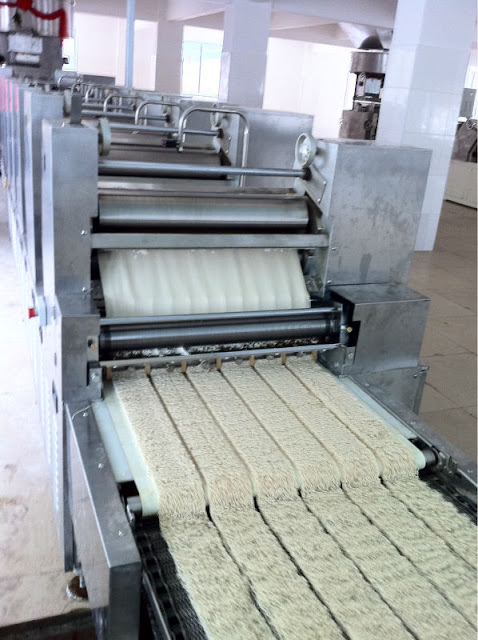This is How Instant Noodles Are Made and Produced
Written by Alvian Casablancas on
Sep 3, 2015
Do you like to eat instant noodles? A fast food which is become the first food you may find when you're getting hungry. However, if it's too much to be consumed, it's not good for your health though.
There are various brand of instant noodles in the market. In general, the way they produce instant noodles are similar, which distinguishes only at the spice which gives flavor to the noodles. And the quality of the material also affects the taste of the noodles. Well, how do you think they're produced? Here's the explanation:
There are various brand of instant noodles in the market. In general, the way they produce instant noodles are similar, which distinguishes only at the spice which gives flavor to the noodles. And the quality of the material also affects the taste of the noodles. Well, how do you think they're produced? Here's the explanation:
Process #1: The first step of the process in making instant noodles is by mixing the ingredients. The needed materials are consisted of flour and water. To get the perfect dough, they usually use around 32-34% of water content. In large measure, the mixing is done using a large mixer.
 |
| Mixing the ingredients |
Process #2: Once the flour and water are well-blended, the next step is forming the dough. The dough will be milled until it's smooth. In this process, the dough will be diluted to a certain thickness to form long sheets.
These sheets of dough will be moved towards the cutting machine. At this stage, the sheets will be cut and 'frizzed'. Here the noodles' shape will be noticeable, but still in the form of long strands which haven't been cut off.
These sheets of dough will be moved towards the cutting machine. At this stage, the sheets will be cut and 'frizzed'. Here the noodles' shape will be noticeable, but still in the form of long strands which haven't been cut off.
 |
| Shaping the noodles |
Process #3: These strands of curly noodles are still raw and need to be matured through the maturation phase by steaming. Just as the usual steaming process but with a large-sized apparatus in which strands of noodles will move slowly passing the steamer.
 |
| Steaming process |
Process #4: After steamed, noodles that before had a soft form will be transformed into a little hard. Then they will be cut according to their weight. These noodles which look like noodles still not allowed to be packaged. But, they should be fried first at a temperature of 140-150 C for 60-120 seconds. Frying the noodles is meant to reduce the water content within the noodles until they are dry completely.
 |
| Cutting the noodles |
Process #5: The process is almost done, but before they are packaged, noodles which still hot will be passed through the cooling process beforehand. The noodles are drained, and moved toward the fan spins with a temperature of 40 C. This process aims to make the oil into a solid and stick to the noodles which automatically makes the noodles become hard and not easy to mold.
 |
| Drain the noodles using fan |
Final process: After this process, the noodles are ready to be boxed. But, to maintain the quality of the noodles, they will be sorted manually by officers. This process will separate the noodles which aren't good in quality in terms of shape and weight. Noodles which are defective will be removed.
 |
| Separate bad quality noodles |
Noodles with good quality will be packaged along the spices. This packaging procedure is also based on the rules, which contains something like "Instant noodles should be packed in a sealed container, not influenced or affected the contents, and safe during storage and distribution". Thus not contaminated with anything.
 |
| Separate bad quality noodles |
Photos by openrice.com










0 komentar:
Post a Comment